Patient Outcomes
As part of our quality framework, we regularly measure and benchmark ourselves against a range of 'Clinical Indicators'.
In accordance with the National Safety and Quality Health Service Standard 2: Partnering with Consumers, the contents of this page have been reviewed by the Consumer Advisory Committee at Gosford Private Hospital.
Infection Prevention and Control
We believe as a result of our clinical governance and risk minimisation strategies and our corporate culture of committing to a continuous improvement strategy, we are able to demonstrate above average outcomes for our patients, and more importantly less hospital-acquired complications associated with their hospital stay. Infection prevention and control is just one way we demonstrate less complications for our patients.
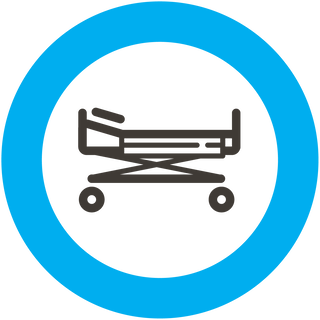
Infection Rate (Staph Aureus Bacteraemia or SAB)
Healthe Care Infection Rates
Germs can cause an infection known as Staphylococcus Aureus Bacteraemia (SAB) which needs antibiotic treatment if it enters the blood. Some serious strains are resistant to antibiotics.
Healthe Care's rate of infection is zero, well below the national average for hospitals. To reduce the risk of hospital acquired infections, we use best practice infection prevention and control with a focus on hand washing as this is the most effective way to stop germs spreading or entering the blood.
We provide continual education and training to all our caregivers to ensure we keep our infection rate well below the national target.
The graph below shows the number of patients that developed a hospital acquired Staphylococcus Aureus Bacteraemia (SAB) infection. The Healthe Care rate is lower (better) than the industry benchmark. Healthe Care has a number of risk mitigation strategies in place to reduce the risk of transmission of Health Care Associated Infections.
The most valuable prevention is for everyone to wash their hands, patients, visitors and health professionals alike.
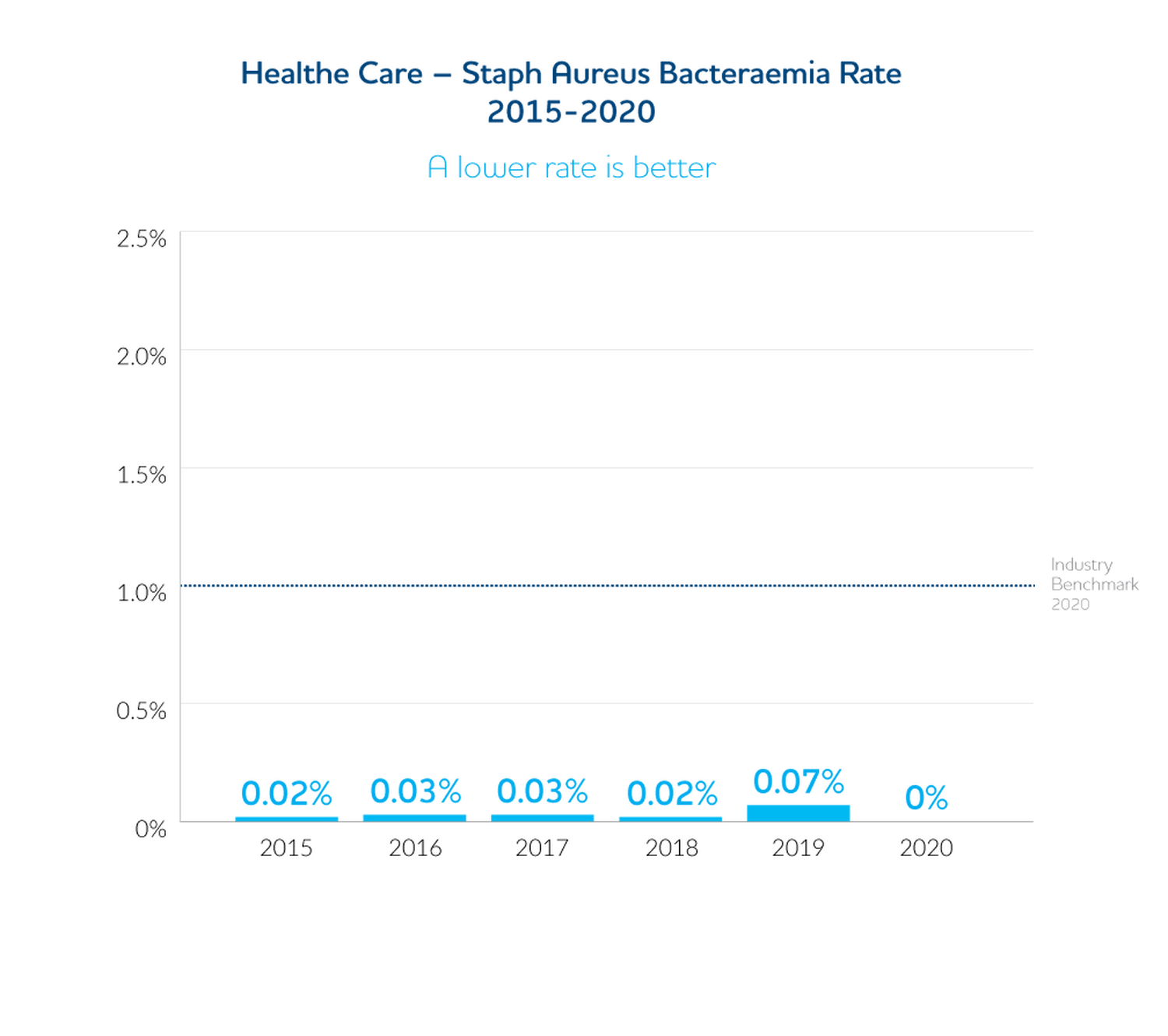

Clostridium Difficile (C Diff)
Healthe Care C Diff Rates
C Diff is an infection of the bowel that causes diarrhoea. It can be caused by too many courses of antibiotics or very strong doses of antibiotics. The industry rate varies from 2 to 3 cases per 10,000 days of patient care.
The graph below shows the Clostridium Difficile infection rate at Healthe Care hospitals is well below the industry average, meaning a patient is less likely to develop a C Diff infection in a Healthe Care hospital.
To reduce the risk of these hospital acquired infections, we use best practice infection prevention and control with a focus on hand washing as this is the most effective way to stop germs entering the blood. We provide continual education and training to all our healthcare workers to ensure we keep our infection rate well below the national target.


Hand Hygiene
Healthe Care Hand Hygiene Compliance
Hand hygiene (or hand washing) is one of the best ways to stop infections so, as a priority, we educate and train all caregivers in the World Health Organisation’s (WHO) “five moments” for hand hygiene. We also audit our staff and provide our results to Hand Hygiene Australia (HHA) to compare us against other Hospitals.
We rank significantly higher than national targets for hand hygiene. Our auditors complete compliance audits on a regular basis and submit data three times a year. We also participate in the national hand hygiene strategy to continually improve our rates.
The graph below shows that Healthe Care's Hand Hygiene compliance rates are above (better) than the Industry benchmark.
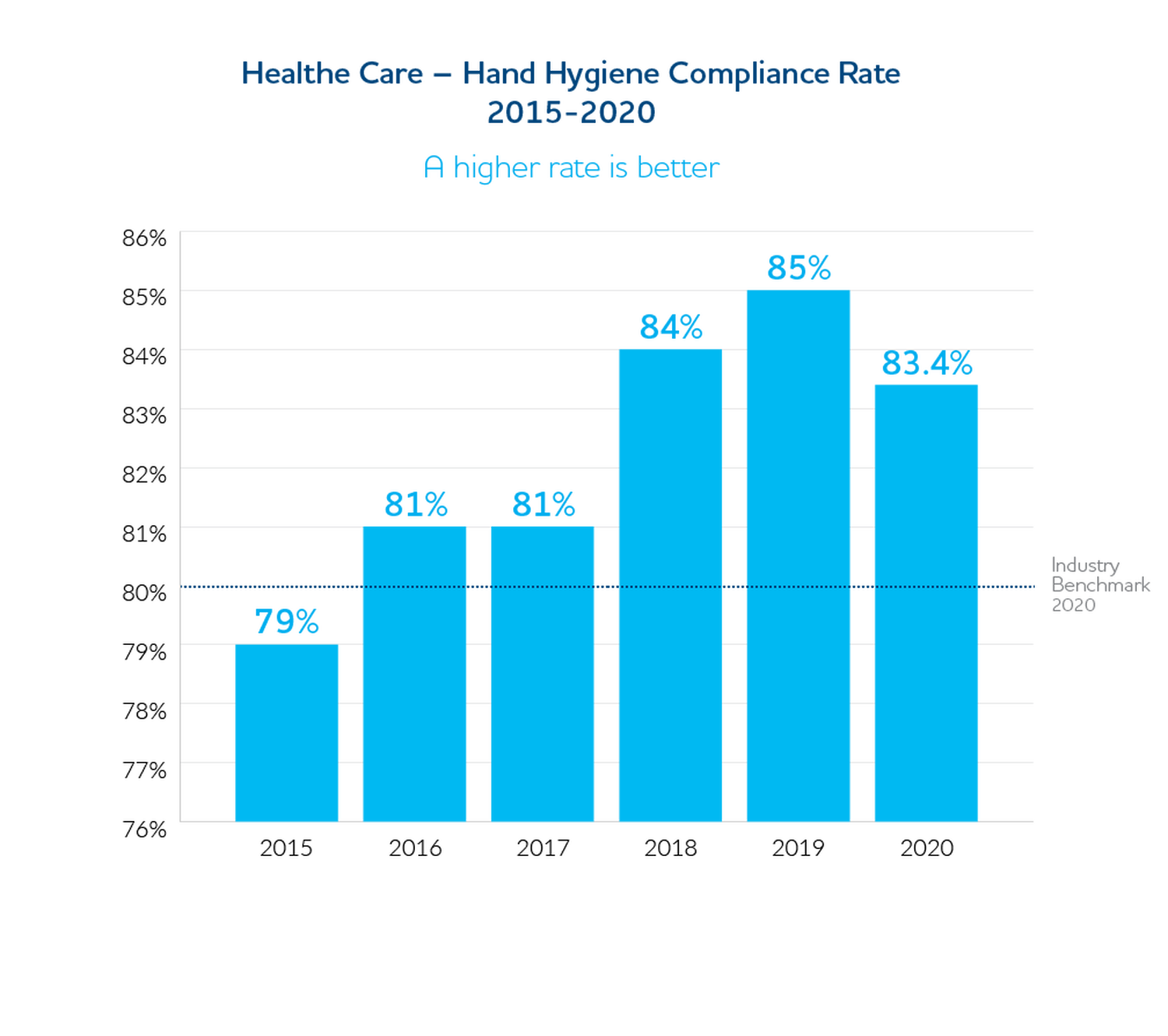
Inpatient Falls resulting in Significant Injury
Healthe Care Inpatient Fall Rates
A fall in a hospital is when a patient suddenly and unintentionally falls to the ground or lower level. This can happen in a hospital setting for a number of reasons, such as a change in medication, the after affects of an anaesthetic, or just because the surroundings are unfamiliar. Falls can injure patients and affect their recovery and independence.
The graph below shows the number of patient that sustained a fall that caused an injury as a percentage of total patient bed-days (the number of days that all patients spend in hospital). Healthe Care achieves the same rate (zero) as the industry benchmark.
We are working to improve this rate through our established Falls Prevention and Management Program and an electronic Incident/Risk Management and Reporting System. A variety of best practice tools and prevention intervention guidelines are utilised to identify those patients/consumers at high risk of having a fall.
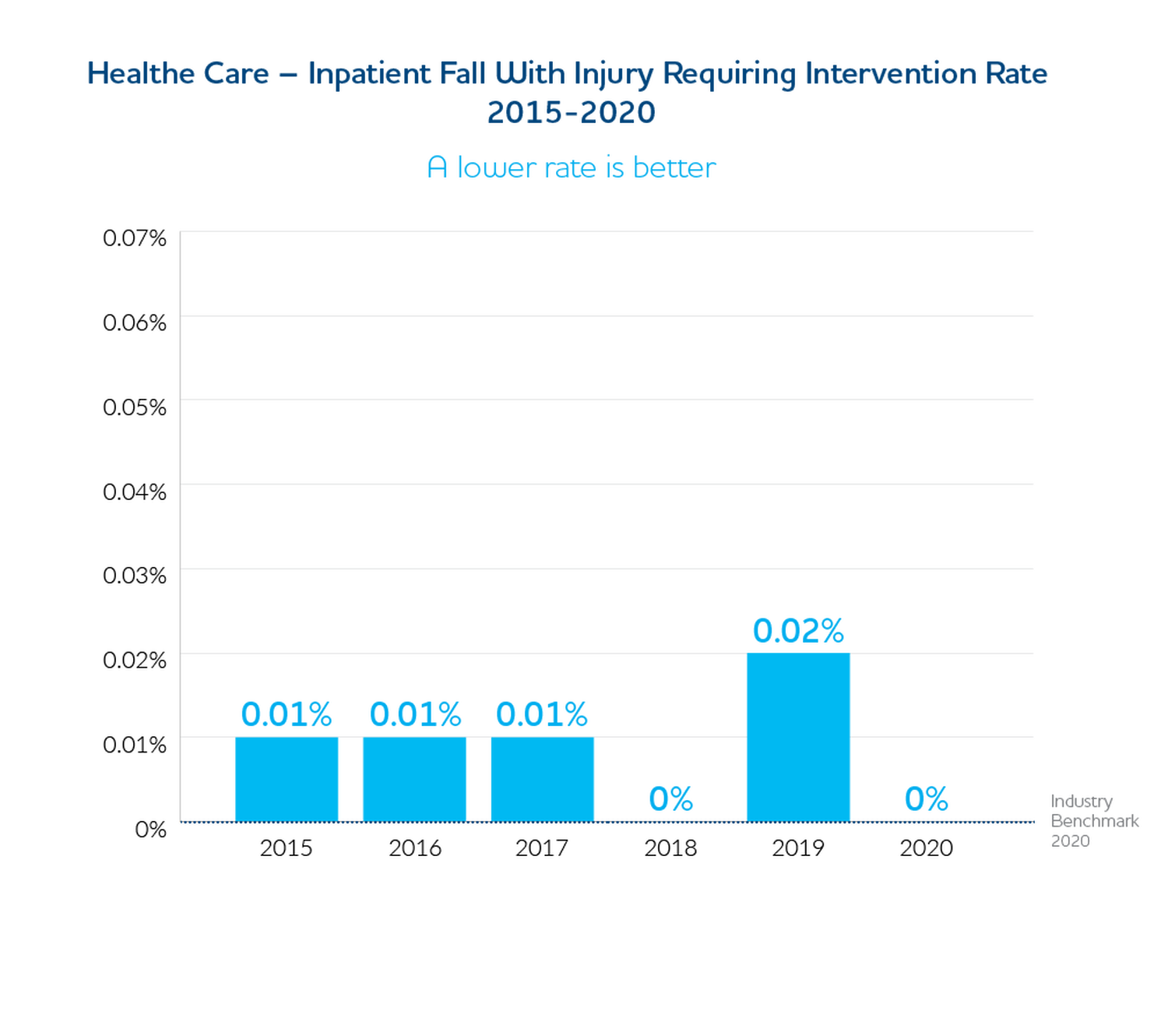

Unplanned Re-Admissions
Healthe Care Unplanned Re-Admissions
The rate of unplanned re-admissions provides an indication of the effectiveness of our planning processes, for when people are discharged from hospital.
The graph below shows the number of patients that were re-admitted to hospital within 28 days of discharge from hospital, with a diagnosis related to the same condition as the original admission.
Healthe Care’s rate is lower (better) than the industry benchmark. This is achieved, for example, through the presence of dedicated Discharge Planners, Social Workers and other Allied Health staff as part of better discharge planning initiatives, plus pre-admission clinics where patients' discharge needs are identified prior to admission.
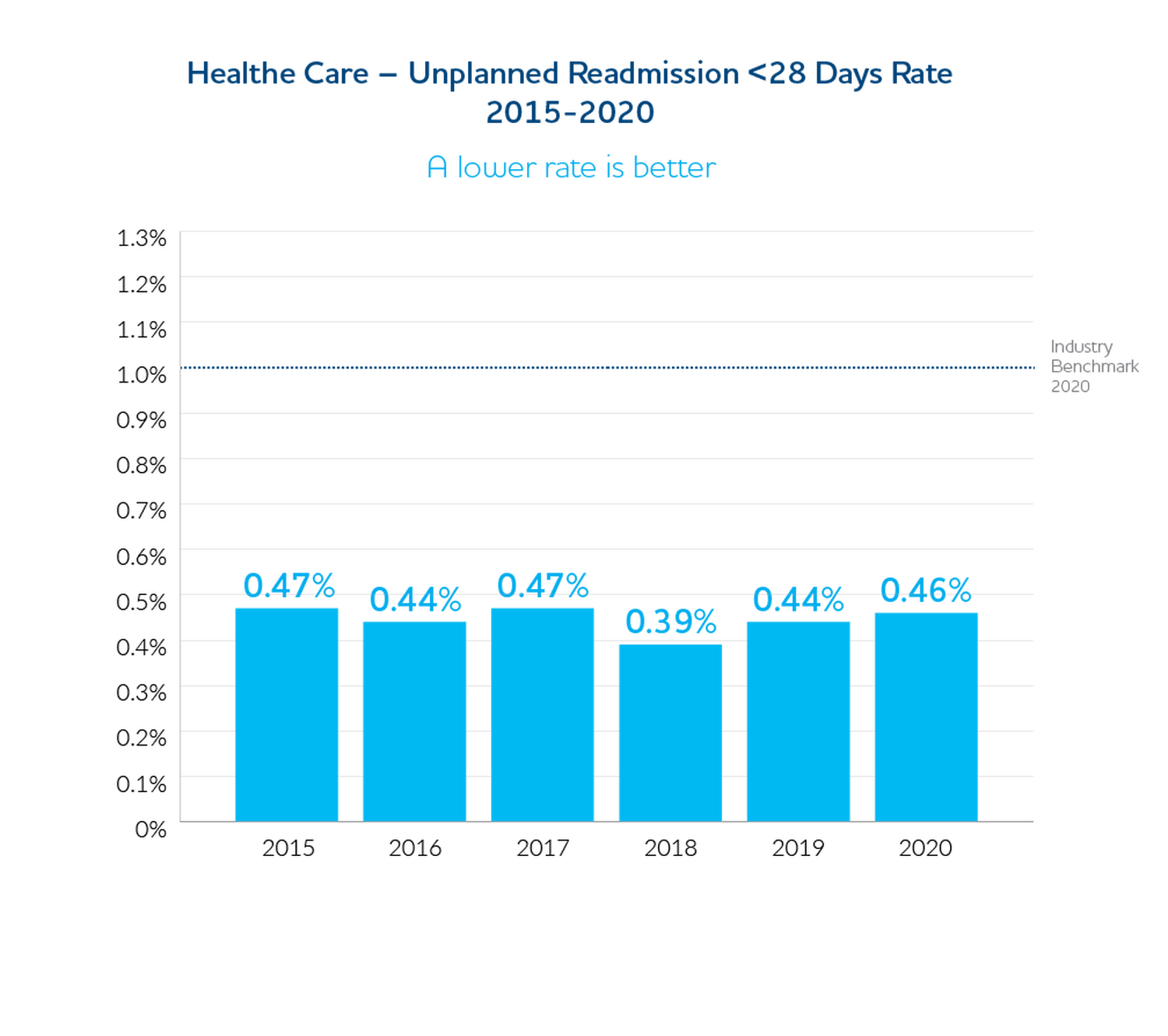
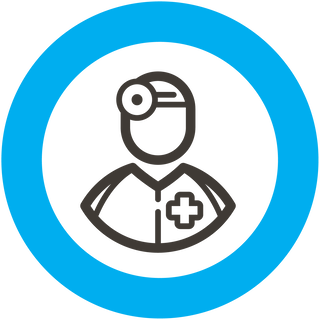
Unplanned Returns to Operating Theatre
Healthe Care Unplanned Returns
Healthe Care doctors undertake surgery in many specialty areas, which range from minor procedures to more complex surgery requiring specialised care. We monitor our patient outcomes by comparing any unplanned returns to the operating theatre to other Australian hospitals nationally. The aim is to reduce returns to the operating theatre where possible; however there are many factors which influence this, and in some cases it is necessary to have further surgery to save a life.
Unplanned returns to the operating theatre are frequently due to complications, for example to treat bleeding or other problems occurring early after the operation. Some complications following complex surgery are to be expected due to patients’ pre-existing diseases or conditions and the nature of the disease or condition being treated. Unplanned returns to the operating theatre are reported and clinical outcomes analysed. Recommendations are actioned and monitored to ensure improvements are made where possible.
The graph below shows the number of patients that had a surgical procedure or operation and required an unplanned return for further surgery during the same admission. Healthe Care’s rate is lower (better) than the industry benchmark.


Medication Errors
Healthe Care Medication Error Rate
Medication errors include any errors in the dispensing and administration of medication that require a medical intervention.
The graph below shows the number of patients that required an intervention as a consequence of a medication error. Healthe Care's rate is slightly higher than the industry benchmark.
We are working to reduce this through a number of medication safety initiatives, including the adoption of the National In-Patient Medication Charts endorsed by the Australian Commission on Safety and Quality in Health Care (ACSQHC), and implementing a standardised patient labeling system when administering injectable medicines.
Medication incident rates and outcomes are monitored across our hospitals to determine if our initiatives are reducing the error rate and level of patient harm.
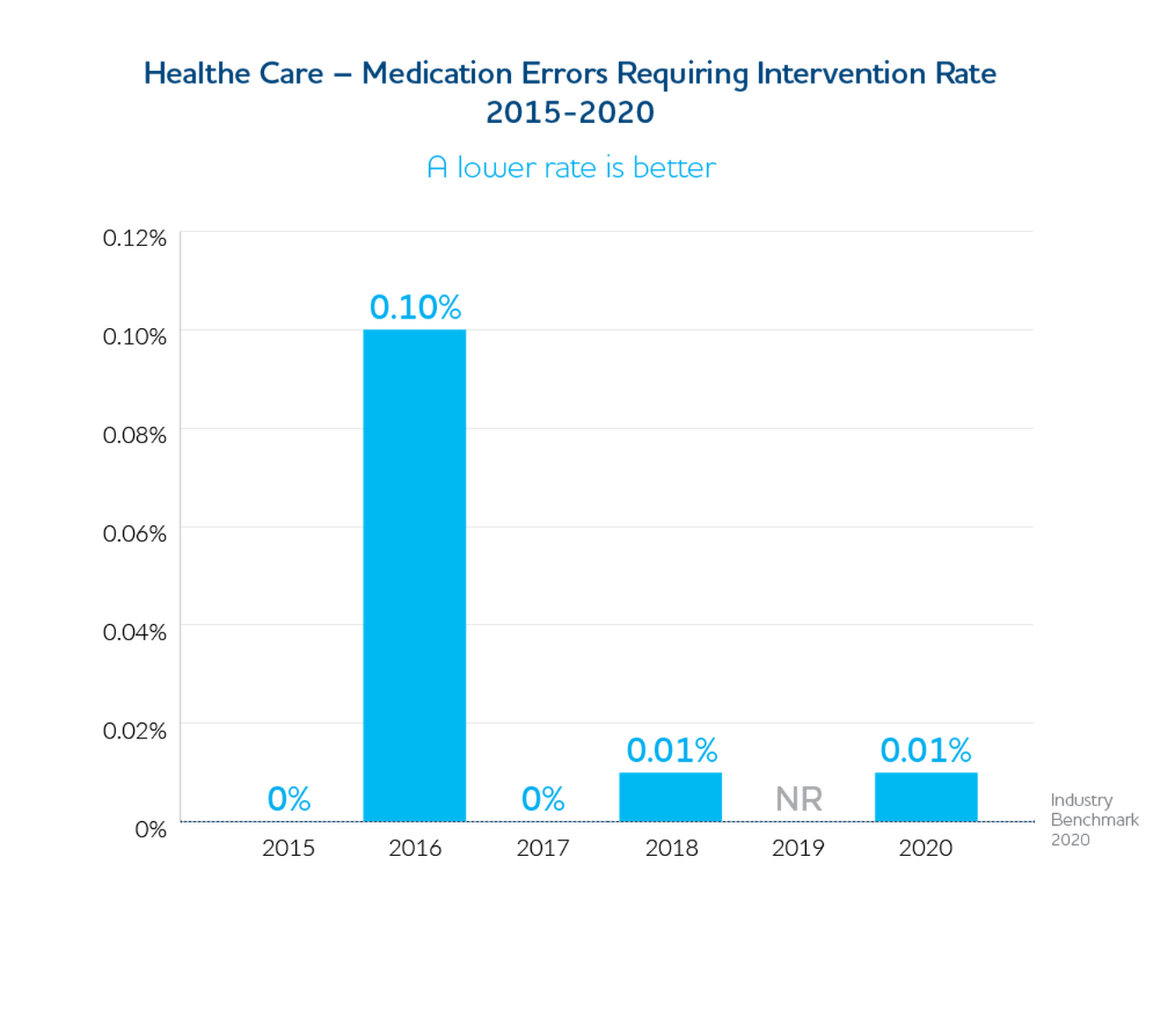

Pressure Injuries
Healthe Care Pressure Injury Rate
A pressure injury is an area of damage to the skin and underlying tissue caused by constant pressure or friction. This can sometimes occur when a patient is in one position and unable to easily move for a long period.
Pressure injuries can be prevented. We also help to reduce the likelihood of our patients developing pressure injuries during their hospital stay, by assessing their individual risk and follow individual care plans.
As part of our clinical care, we inspect skin frequently, keep skin dry, ensure patients have access to the best nutrition and hydration, and help and encourage patients to move frequently.
This is very important in maintaining quality care as pressure injuries can cause significant pain and discomfort that can slow a patient’s recovery.
The graph below shows the number of patients that developed a pressure injury while in hospital. Healthe Care’s rate is equal to the industry benchmark.
We achieve this rate through an established Pressure Injury Prevention Management Program and the reporting and monitoring of every pressure injury for the purposes of identifying areas for improvement.
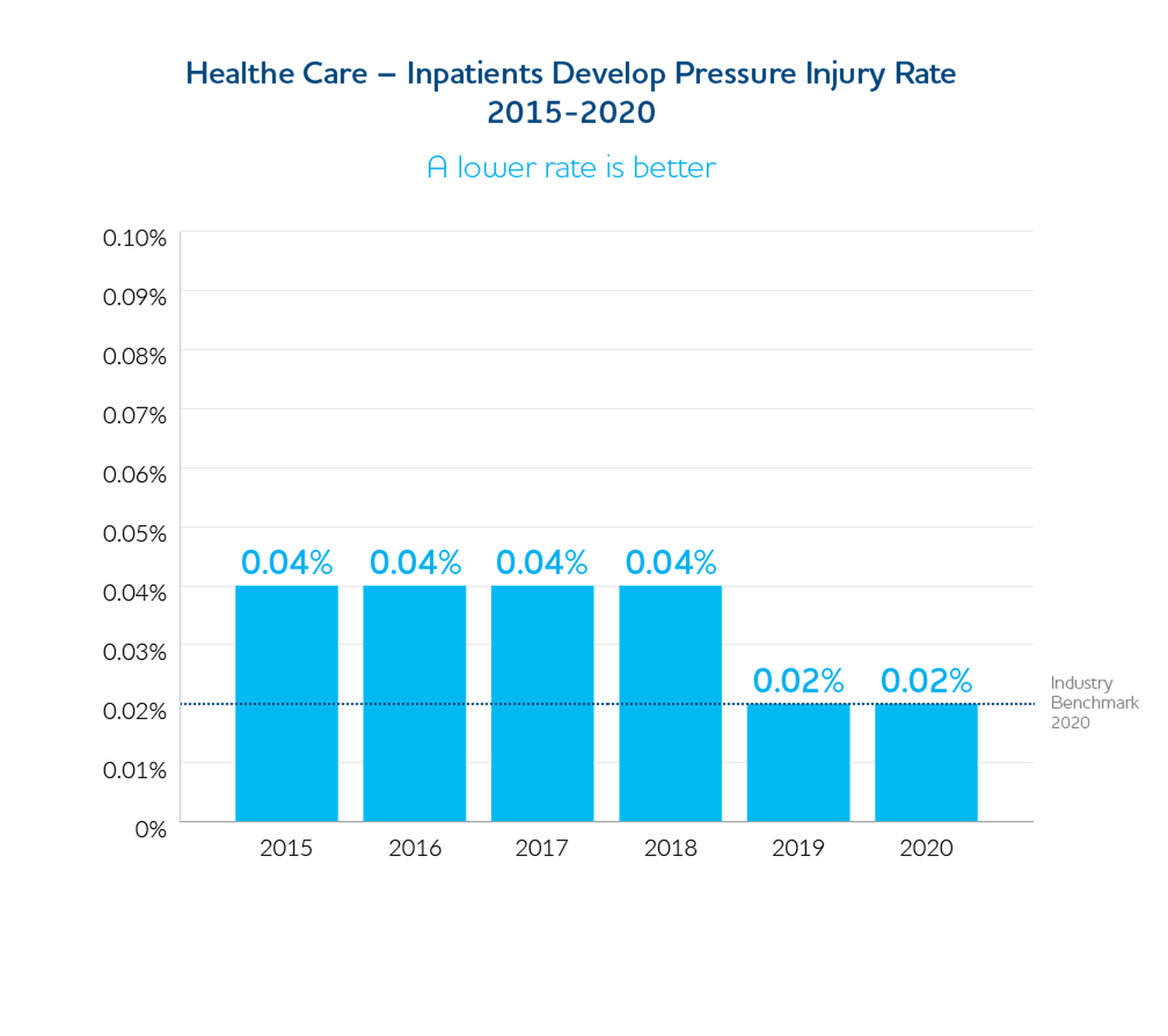
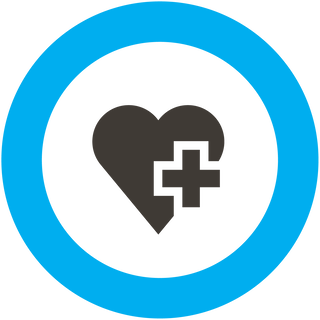
Adverse Blood Transfusion Events
Healthe Care Adverse Blood Transfusion Rates
As part of your hospital admission, you may require a blood transfusion, which is a procedure where you receive blood through your vein. Blood transfusions may be necessary for a number of reasons, for example, if you have a surgical procedure, you are anaemic or if your body is not producing sufficient blood cells. Blood transfusions can be a lifesaving measure, but is not without some risk and therefore is only prescribed after a doctor has deemed it necessary.
Sometimes an adverse reaction to blood transfusion can occur and is treated immediately.
Healthe Care has rate of adverse transfusion reactions equal to the average industry rate.
We are continuing to work on lowering this rate by ensuring blood is only prescribed when necessary; ensuring staff are competent in blood transfusion management; and by ensuring that blood and blood product usage is in line with current best practice guidelines, as set out by the National Standard for Blood and Blood Products.
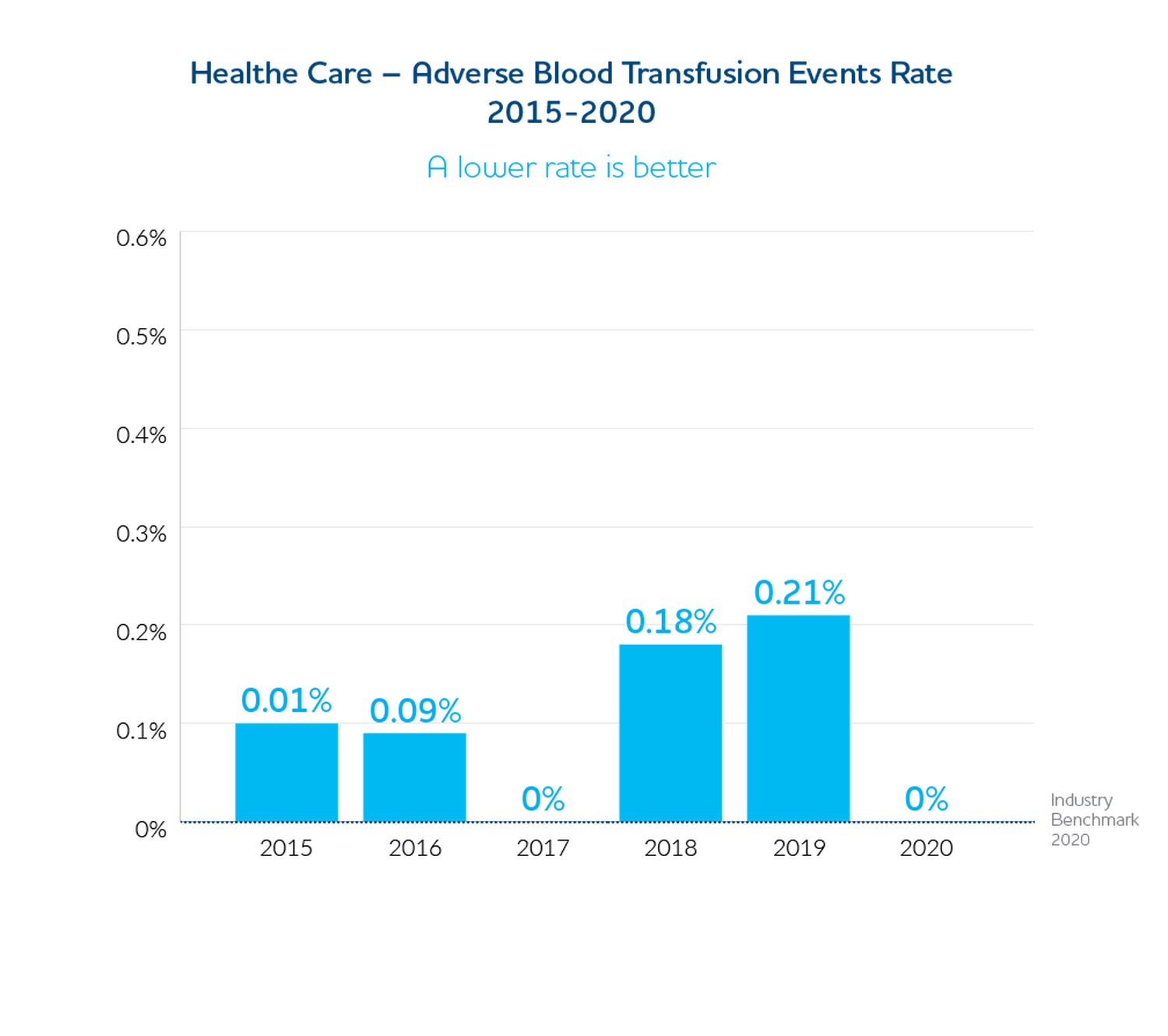
Term babies transferred to a higher level of care
Healthe Care babies transferred to higher care
The transfer of newborns to a Special Care Nursery (SCN) or a Neonatal Intensive Care Unit (NICU) is sometimes necessary to support newborns in the early hours and days after birth.
Some of these transfers can be 'planned' during antenatal care, as the mother's health during pregnancy can be an important predictor in whether further support for the baby is needed, however at other times, this can be an unexpected event that occurs as a result of birth complications.
Healthe Care collects information on the number of babies transferred to a higher lever of care to better understand how we can support mothers and babies better with their antenatal and postnatal care.
Our Healthe Care Maternity Hospitals have a higher rate than the industry benchmark, meaning that more babies require specialised support during the early stages after birth.
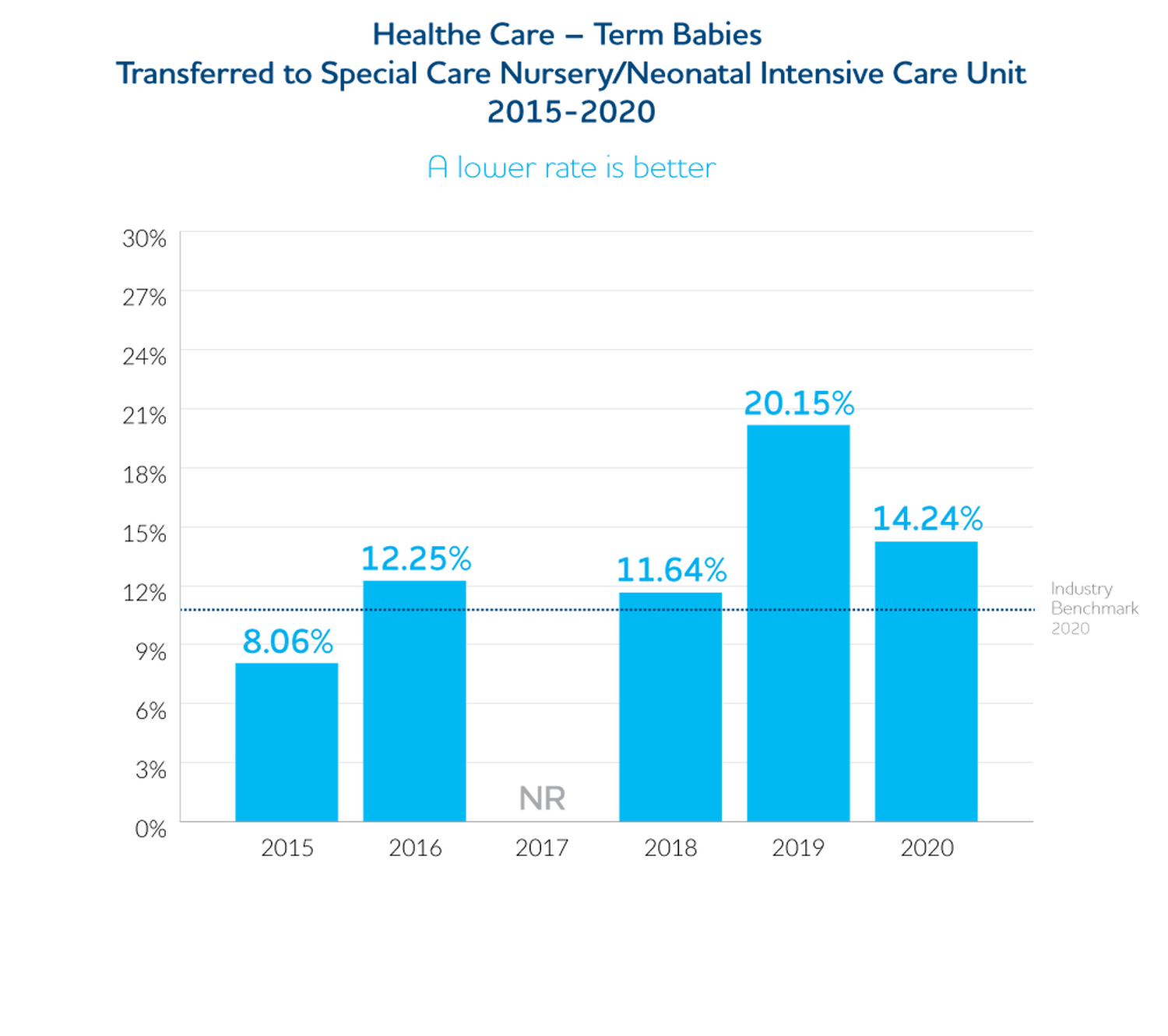

Functional Independence Measure (FIM)
Healthe Care FIM Rates
Rehabilitation programs aim to enable the highest level of independence (physically, psychologically and socially) to people with loss of function or ability due to injury or disease.
At the time of admission into the rehabilitation program the patient has a Functional Independence Measure (FIM) rating conducted by a qualified member of the rehabilitation team. The FIM is redone during and at the end of the program to determine the patient’s functional improvement and therefore the level of independence gained in activities of daily living. Progress in the areas of social interaction and psychological wellbeing are also measured.
The FIM is the industry standardised functional assessment tool that is used by all Rehabilitation facilities. A higher score at discharge indicates that the patient has achieved a higher level of improvement.
Healthe Care rehabilitation services have achieved similar results to the industry average scores for functional improvement.
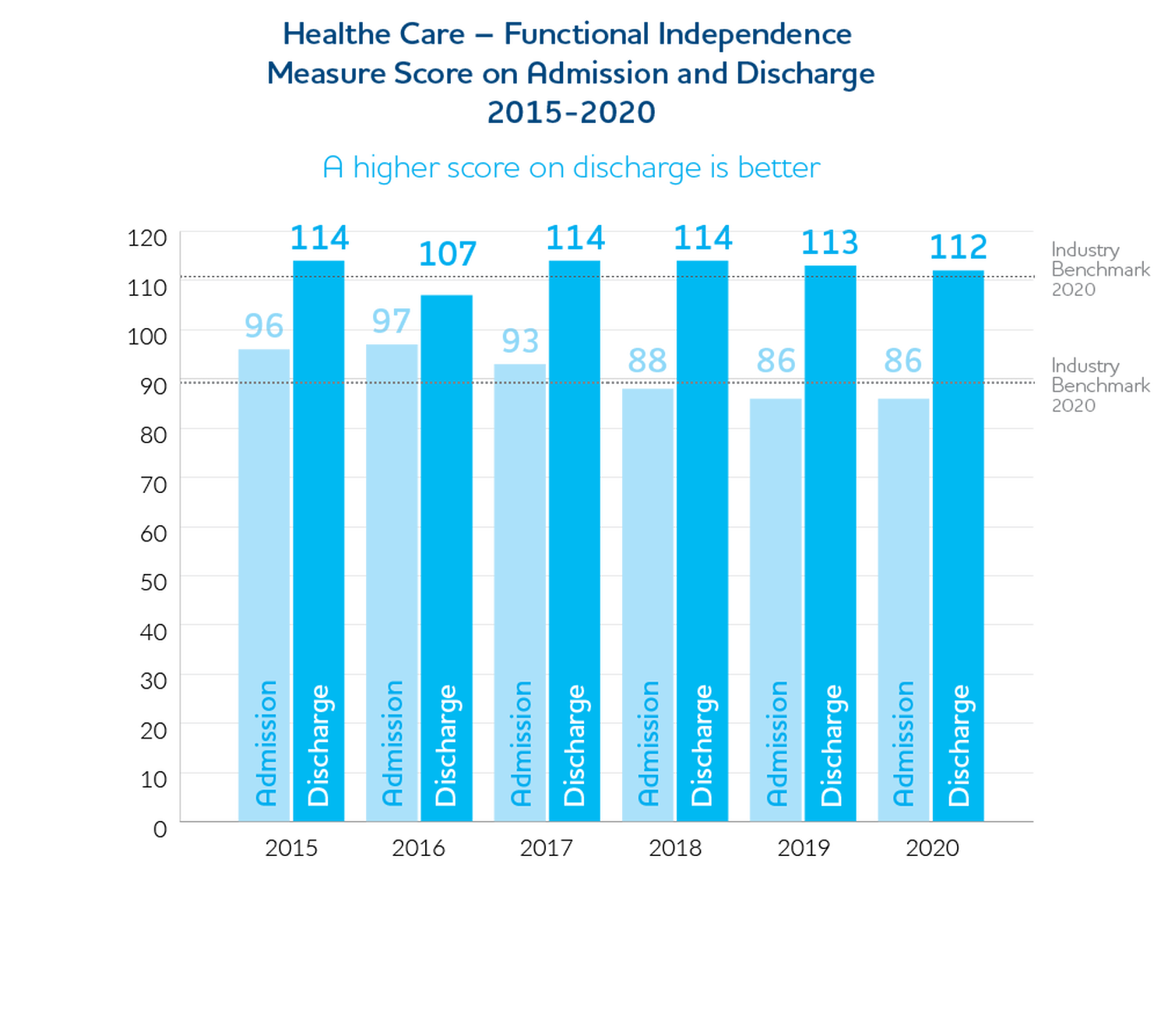

Mental Health – Health of The Nation Outcome Score
Healthe Care Mental Health Improvements
At Healthe Care mental health facilities, we measure the mental health and wellbeing of our patients on admission and again on discharge to assess how their mental health and wellbeing is improving.
We use the internationally recognised Health of the Nation Outcome Scales (HoNOS), a tool which allows clinicians and patients to assess various aspects of a patient's mental health status, such as depression, anxiety or problematic behaviour.
The graph below shows the decrease in reported mental health problems in patients after treatment. The light coloured bars show reported mental health problems on admission to our mental health facilities. The dark coloured bars show mental health problems on discharge. This is compared to the outcomes at other Australian private mental health facilities.
